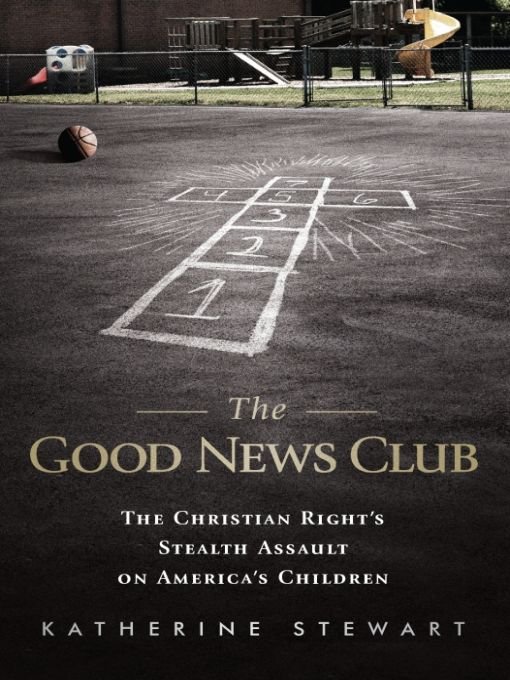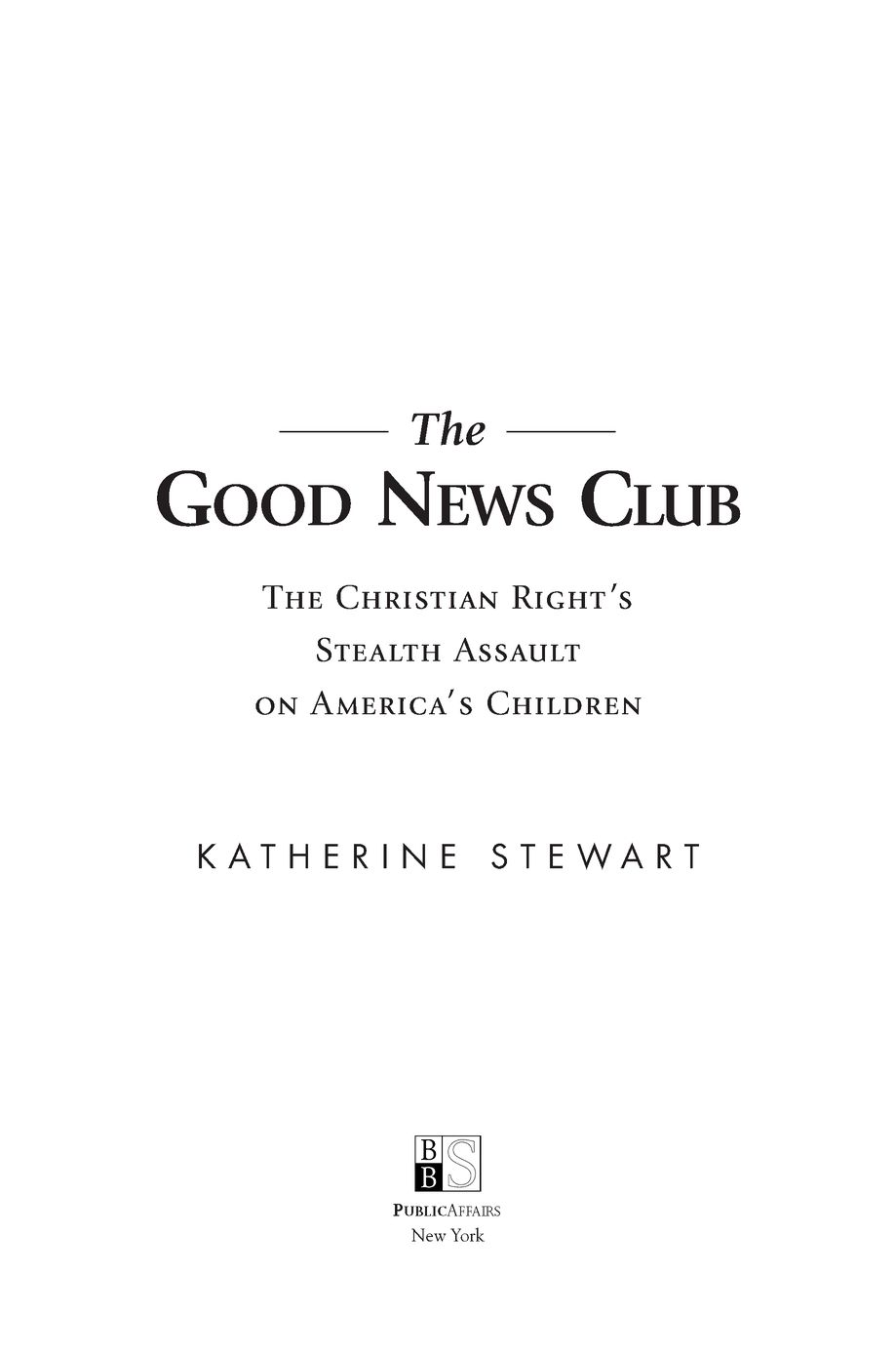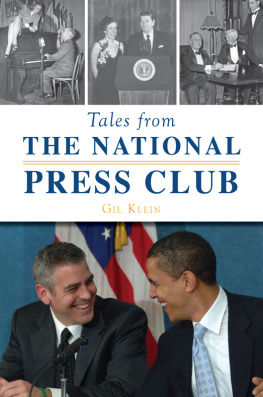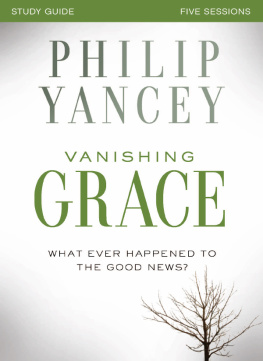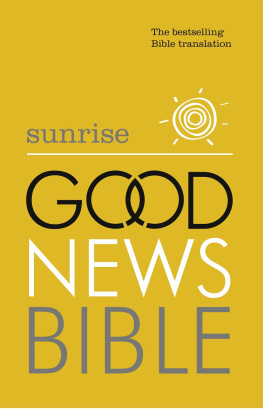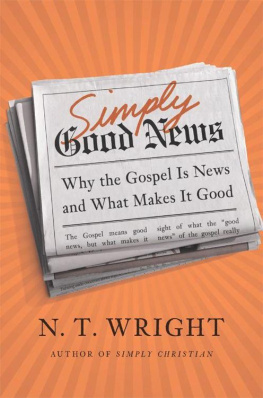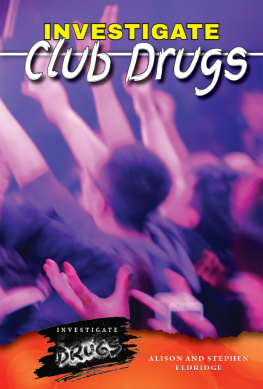Table of Contents
For my family
INTRODUCTION
THIS BOOK HAD its beginnings in one of those events that at first seems too small to matter, until suddenly it becomes too big to ignore. When a program called the Good News Club showed up on a roster of after-school activities at my daughters public elementary school in Santa Barbara, California, I didnt give it much thought. The Club advertised itself as a nondenominational Bible study program for children of kindergarten age and older, and it required parental consent for children to participate. I soon found out, however, that the Good News Club is very different from what it appears to be. More importantly, I discovered that the Club is really just one small part of a much larger story that should be of concern to anyone who cares about the future of public educationor indeed the future of secular democracyin the United States.
We have been told, mostly by religious conservatives, that US public schools are devoid of religion. Following the Supreme Court decisions concerning school prayer in the 1960s, the usual story goes, God was kicked out of the classroom. I believe that this story grossly misrepresents reality. In conducting research for this book, I traveled to dozens of cities and towns across the country. I visited regions famous for their piety, like west Texas and Alabama, and others known for the opposite, like Seattle and New York City. Everywhere I found religion-driven programs and initiatives inserting themselves into public school systems with unprecedented force and unexpected consequences. I saw student athletic programs turned into vehicles for religious recruiting. I attended services at a dozen of the hundreds of school facilities that double as taxpayer-financed houses of worship. I heard the stories of children who have been subject to proselytizing in classrooms and school yards, and I spoke with other children who have been instructed to proselytize their friends at school. I met with school board officials who are busy rewriting textbook standards to conform to their own religious agendas. I interviewed the people promoting and attending Bible Study courses that turned out to be programs of sectarian indoctrination. And I sat in on training sessions with instructors for the Good News Club, which now operates in nearly 3,500 public elementary schools around the country. Today, there is more religious activity in American public schools than there has been for the past 100 years.
Like the Good News Club that appeared one day in my California town, many of the religious initiatives in public schools present themselves as spontaneous expressions of faith by members of local communities. But they are not. The labor behind the initiatives may be local, but the ideas, the money, and the legal firepower that make them possible are national. The movement is coordinated and given strategic direction by extremely well financed groups whose leaders write the scripts that are followed in classrooms, playgrounds, and courtrooms from New York to California. Some of the most powerful forces in public education today are groups that you may never have heard ofthe Alliance Defense Fund (ADF), the Liberty Counsel, the American Center for Law and Justice (ACLJ), and other conservative legal groupsthat, with combined budgets totaling over $100 million per year, have masterminded the religious assault on public education.
Many religions are represented to some degree in initiatives that have inserted themselves in public schools, but evangelical Christianity accounts for the overwhelming majority of the programs. Although the evangelical programs often present themselves as nondenominational, they tend to represent a very conservative, even fundamentalist form of religion. Most of the activists I met believe that the Bible is the literal and inerrant word of God; that conversion to their form of faith is the only path to salvation; and that they are engaged in a daily struggle with Satan. They also believe that most people who call themselves Christian are not. Many of them are confident that United Methodists, liberal Congregationalists, US Episcopalians, the wrong kind of Presbyterians, and Roman Catholics, for example, will not be among the saved.
The largest and most active programs at work in the public schools are associated with groups that should be called Christian Nationalists. These groups maintain that the United States was founded as a Christian nation, and that it is the right of Christians to take it back. They see their efforts in the schools as a part of a plan to bring the nations children back to its founding religion and thereby lay the basis for Christian control of all the important parts of government and society. Many of the activists I met believe that the United States has a special role to play in preparing for the imminent end of the world. Of course, many social conservatives who are also Christians are not members of the Christian Right, and many supporters of the Christian Right are not Christian Nationalists; however, to a degree that many social conservatives fail to appreciate, it is the Christian Nationalists who are driving the agenda in the public schools.
In my research, I was surprised to see, over and over again, that one of the distinguishing features of the public school initiatives involving religionand one of the reasons they have failed to attract the attention they shouldis that they rely on misdirection and deceit. Programs that advertise themselves as Bible study from a historical or nondenominational perspective, for example, routinely turn out to be thinly disguised sectarian training. Programs presented as initiatives arising from students are instead conceived, coordinated, and funded by adults who may live in a different state. Programs that were described to school administrators and legal staff as entirely independent of the schools in which they operate turn around and seek to convey exactly the opposite message to the children who participate in them. Programs that reassure parents that their aim is to reinforce the religion of their families make it part of their mission to convert children to beliefs that differ from those of their parents. Programs that ostensibly limit their attention to students whose parents have explicitly permitted their participation seek to use those students to reach the children of parents who have not given their consent.
Although the programs aim at all age groups, a surprising number are directed at the very youngchildren in the first years of school. Among many of the modern missionary groups, it is now accepted wisdom that the most fruitful targets of conversion efforts are children between the ages of four and fourteena cohort that they refer to as the 4/14 Window. Schools are especially attractive because small children are easily swayed by representatives of authority, such as teachers and school officials, and typically cant distinguish between schoolteachers and the people who teach them in school classrooms after hours.
I was surprised to discover that the damage caused by these initiatives did not always take the form one might expect. In the usual narratives about religion in the schools, the unstated premise is that the religious activity in question represents the will of a majority, and minorities within the community are harmed. But in many instances, the programs enter the schools from outside the community altogether, and are at odds with it from the beginning. And, while minorities frequently bear a special burden, the greatest harm often falls on the school and its populace in general. The insertion of programs with blatantly sectarian agendas into public schools causes intense conflict among formerly harmonious groups of parents, students, and school staff. It imposes a substantial and inappropriate burden on school administrators and teachers. Communities that once rallied around the school begin to withdraw their support. And representatives of all religious groupsincluding those that sought to insert themselves in the schools in the first placefeel unfairly treated. In short, these initiatives produce precisely the kind of undesirable outcomes that always result when individual sects within pluralistic societies attempt to commandeer common resources for their own purposes.

